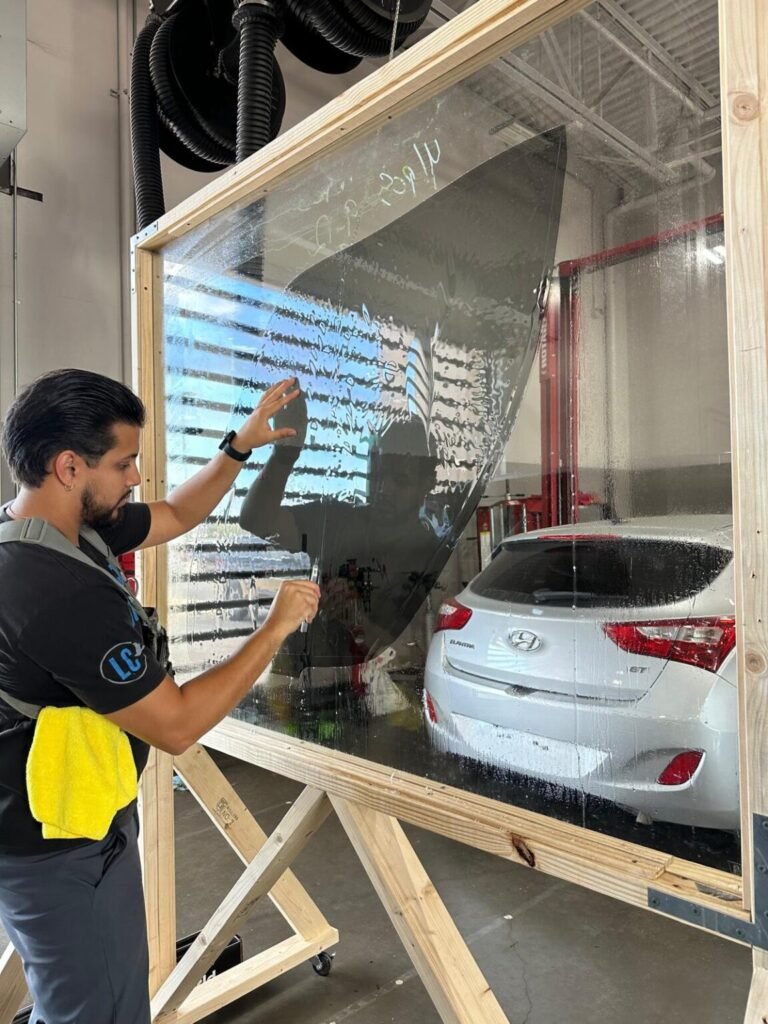Ceramic Windows Tint
- Heat Blocking: Keeps the interior of the vehicle cooler.
- UV Protection: Blocks ultraviolet rays, protecting skin and interiors.
- Superior Clarity: Offers good visibility without annoying reflections.
- Durability: Resistant to fading and wear over time.
- Does Not Interfere with Signals: Does not affect GPS, radio, or mobile signals.
- Style and Privacy: Enhances aesthetics and provides more privacy.
- Energy Efficiency: Reduces air conditioning use, saving energy.
- UV Rejection 99%
- IIR Rejection 90%
- Lifetime warranty
Optical Windows Tint
- Heat Reduction: Effectively blocks heat, keeping the interior cooler.
- UV Protection: Shields against UV rays, preventing fading and protecting the skin.
- Durability: Resistant to wear and fading.
- Does Not Interfere with Signals: Does not affect radio, GPS, or mobile signals.
- UV Rejection 80%
- IRR Rejection 55%
- 5 years warranty
Installation process
The percentage of window tint (%) represents the amount of visible light that can pass through the glass and the tinting material. This value is called VLT(visible light transmission) and is key to understanding how dark the tint will be.
- 100% VLT: No tint; all visible light passes through the glass.
- 50% VLT: Allows half of the visible light to pass through, being a lighter tint.
- 35% VLT: Lets 35% of visible light pass through, offering a balance between clarity and privacy.
- 20% VLT: Only 20% of visible light passes through, making it much darker and popular for those seeking greater privacy.
- 5% VLT: Known as “limo tint,” it is extremely dark and allows only 5% of visible light to pass through, offering maximum privacy.

• Preparation: Thorough cleaning of the windows to remove dirt, dust, or debris that could affect the adhesion of the tint.
• Measurement and Cutting: The tint film is measured and cut to the exact size of each window, ensuring a perfect fit.
• Application: A soapy solution is used to position the film on the glass, allowing adjustments before it is permanently fixed.
• Squeegee: Tools like spatulas are used to remove air bubbles and excess liquid, ensuring a completely smooth surface.
• Curing: The tint film is left to cure for several days, avoiding rolling down the windows to ensure proper adhesion and durability.

To remove the old window tint, we use a steam machine to soften the adhesive and then carefully peel off the film. Afterward, we clean any adhesive residue, leaving the glass clean and ready for new tinting. This process takes time, as it is done with great care to ensure a high-quality result

